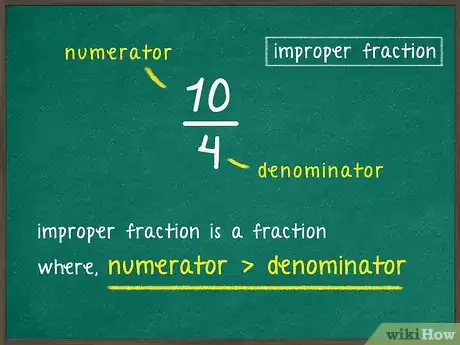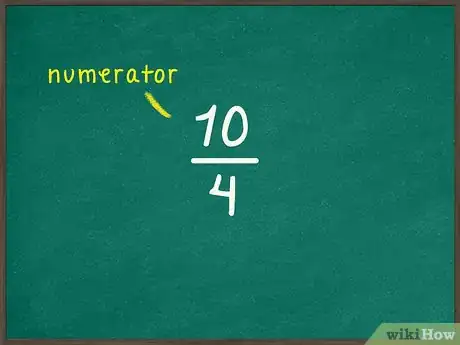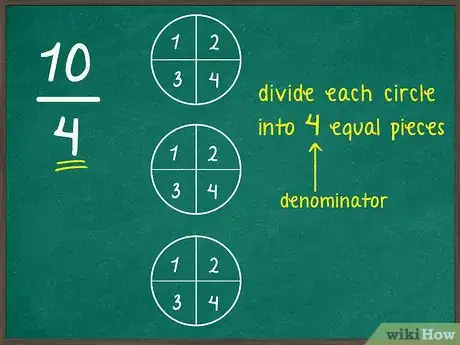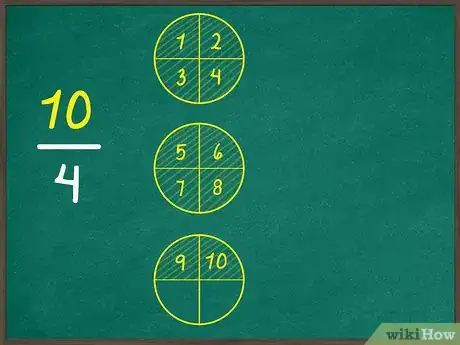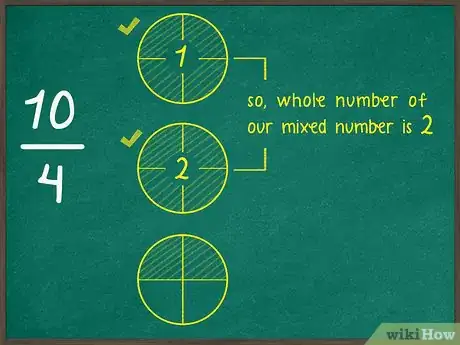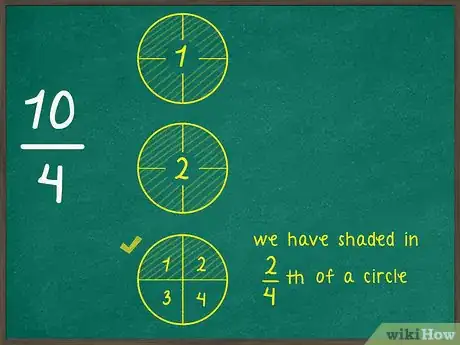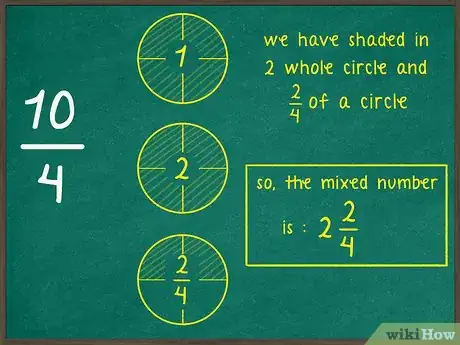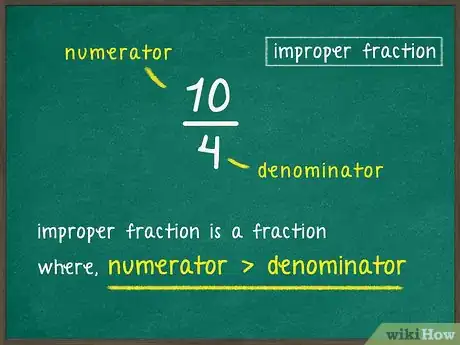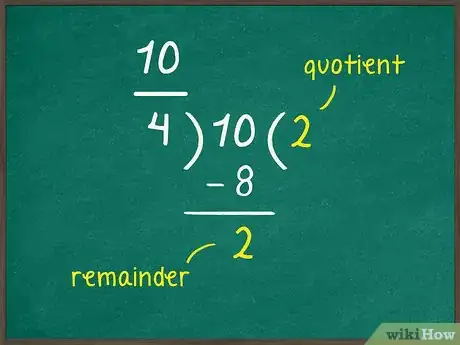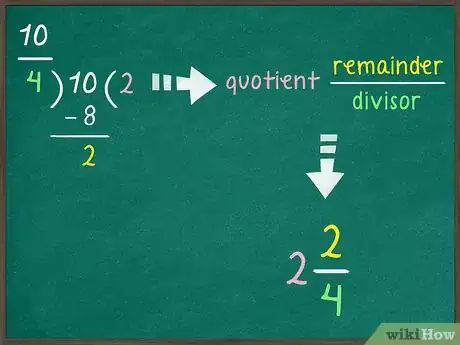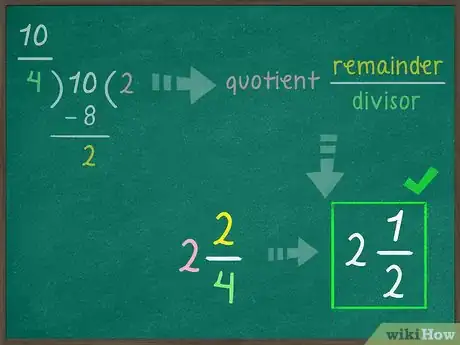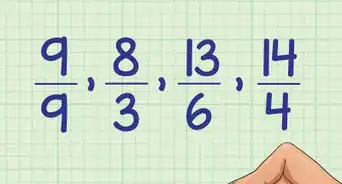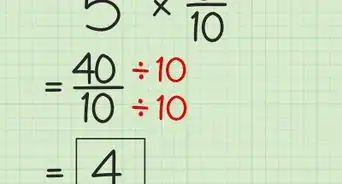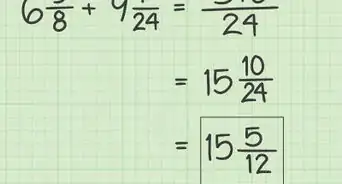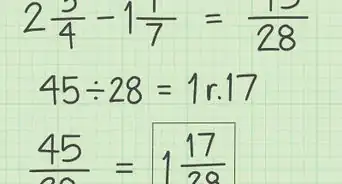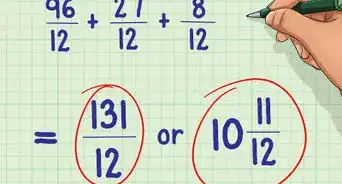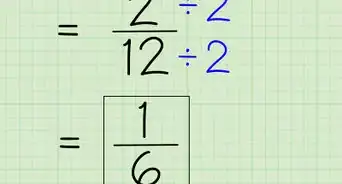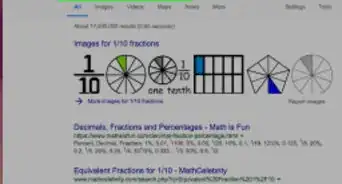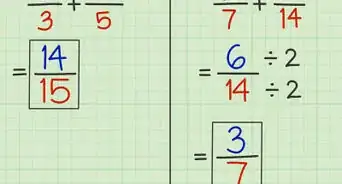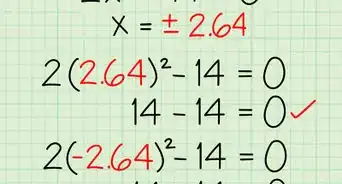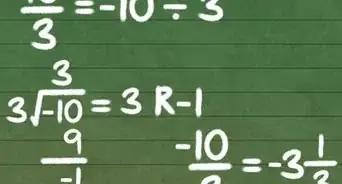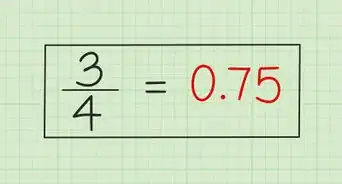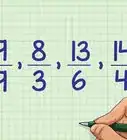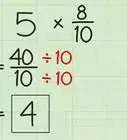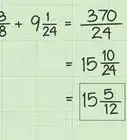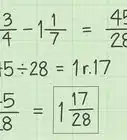This article was co-authored by David Jia. David Jia is an Academic Tutor and the Founder of LA Math Tutoring, a private tutoring company based in Los Angeles, California. With over 10 years of teaching experience, David works with students of all ages and grades in various subjects, as well as college admissions counseling and test preparation for the SAT, ACT, ISEE, and more. After attaining a perfect 800 math score and a 690 English score on the SAT, David was awarded the Dickinson Scholarship from the University of Miami, where he graduated with a Bachelor’s degree in Business Administration. Additionally, David has worked as an instructor for online videos for textbook companies such as Larson Texts, Big Ideas Learning, and Big Ideas Math.
This article has been viewed 133,330 times.
Fractions are numbers that represent parts of whole numbers. If a fraction has a numerator greater than its denominator it is termed an “improper fraction” and can be simplified as a mixed number (a number that combines a whole number and a fraction). There is nothing wrong with an improper fraction, and in fact in mathematics it is often easier to work with than a mixed number; however, in our daily lives we use mixed numbers more than improper fractions,[1] so it is helpful to know how to create them.
Steps
Using a Model
-
1Determine whether your fraction is improper. An improper fraction is a fraction that has a larger numerator than denominator.[2]
- For example, is an improper fraction, because ten is greater than 4.
-
2Interpret the denominator. The denominator is the number below the fraction bar. It tells you how many equal pieces a whole is divided into.
- For example, in the fraction , 4 is the denominator, and it tells you that a whole is divided into four equal parts, or quarters.
Advertisement -
3Interpret the numerator. The numerator is the number above the fraction bar. It tells you how many pieces you have.
- For example, in the fraction , 10 is the numerator, and it tells you that you have 10 parts, or 10 quarters.
-
4Draw circles to represent the whole. Divide each whole according to the denominator of your fraction.
- For example, if your denominator is 4, then divide each circle you draw into 4 equal pieces, or quarters.
-
5Shade in pieces according to your numerator. The number in the numerator tells you how many pieces you should shade in.
- For example, if your fraction is , you will shade in 10 quarters.
-
6Count how many whole circles you shaded in. To simplify an improper fraction, you must turn it into a mixed number, which includes a whole number and a fraction together. The number of whole circles you shaded in represents the whole number of your mixed fraction. Write this number down.
- For example, for the fraction , you should have shaded in 2 whole circles, so the whole number of your mixed number will be 2.
-
7Count how many parts of a whole you shaded in. The leftover shaded parts will represent the fraction in your mixed number. Write this fraction next to your whole number, and you have your mixed number.
- For the fraction , you should have shaded in of a circle, so the fraction part of your mixed number will be . So is equal to .
-
8Simplify your answer, if necessary. Sometimes the fraction of your mixed number will need to be reduced before you reach your final, simplified answer.[3]
- For example, if your mixed number is , you could simplify it to
Using Division
-
1Determine whether your fraction is improper. An improper fraction is a fraction that has a larger numerator than denominator.[4]
- For example, is an improper fraction, because .
-
2Divide the numerator by the denominator. Remember that the fraction bar can be interpreted as a division symbol.[5] To simplify an improper fraction, you must turn it into a mixed number, which includes a whole number and a fraction together. The number of times you can divide the numerator evenly by the denominator will be the whole number of your mixed number. Write this number down, and note the remainder.
- The denominator will not divide evenly into the numerator. The remainder will be interpreted as the fraction part of your mixed number.
- For example, for the fraction complete the calculation . So the whole number of your fraction will be .
-
3Turn the remainder into a fraction. To do this, take the remainder, and place it over the denominator of the original improper fraction. Combine this new fraction with the whole number, and you have your mixed number.
- For example, , so the fraction would be . So is equal to .
-
4Simplify your answer, if necessary. Sometimes the fraction of your mixed number will need to be reduced before you reach your final, simplified answer.[6] Divide the numerator and denominator of the fraction by their greatest common factor.
- For example, if your mixed number is , you could simplify it to .
Community Q&A
-
QuestionWhat if I have a big numerator, like 124?
 Community AnswerAs long as the denominator is less than 124 you have an improper fraction, and you can use the methods presented here to solve. The division method would be easiest, since drawing a model with 124 pieces would take some time.
Community AnswerAs long as the denominator is less than 124 you have an improper fraction, and you can use the methods presented here to solve. The division method would be easiest, since drawing a model with 124 pieces would take some time. -
QuestionWhat if I want to simplify it without making it a mixed number? Like simplifying it into a regular fraction?
 DonaganTop AnswererYou cannot convert an improper fraction into a proper fraction.
DonaganTop AnswererYou cannot convert an improper fraction into a proper fraction. -
QuestionHow do I reduce 42 by 18 5/9?
 DonaganTop AnswererFirst change 42 to 41 9/9. Then subtract 18 from 41, and subtract 5/9 from 9/9. The difference is 23 4/9.
DonaganTop AnswererFirst change 42 to 41 9/9. Then subtract 18 from 41, and subtract 5/9 from 9/9. The difference is 23 4/9.
References
- ↑ https://www.mathsisfun.com/improper-fractions.html
- ↑ https://www.coolmath.com/prealgebra/01-fractions/fractions-07-improper-01
- ↑ https://www.khanacademy.org/math/arithmetic-home/arith-review-fractions/visualizing-equiv-frac/e/simplifying_fractions
- ↑ https://www.coolmath.com/prealgebra/01-fractions/fractions-07-improper-01
- ↑ https://www.coolmath.com/prealgebra/01-fractions/fractions-07-improper-02
- ↑ https://www.khanacademy.org/math/arithmetic-home/arith-review-fractions/visualizing-equiv-frac/e/simplifying_fractions
About This Article
To simplify an improper fraction, start by turning it into a mixed number by dividing the numerator by the denominator. Then, turn the remainder into a fraction by placing it over the denominator of the original fraction. If necessary, simplify the final fraction to get your answer. For example, if your improper fraction was 10/4, you would start by dividing 10 by 4 to get 2 with a remainder of 2. Then, place the remainder over the denominator of the original fraction to get 2/4, and simplify to get 1/2, making the answer 2 1/2. To learn how to simplify an improper fraction by using a model, keep reading!
